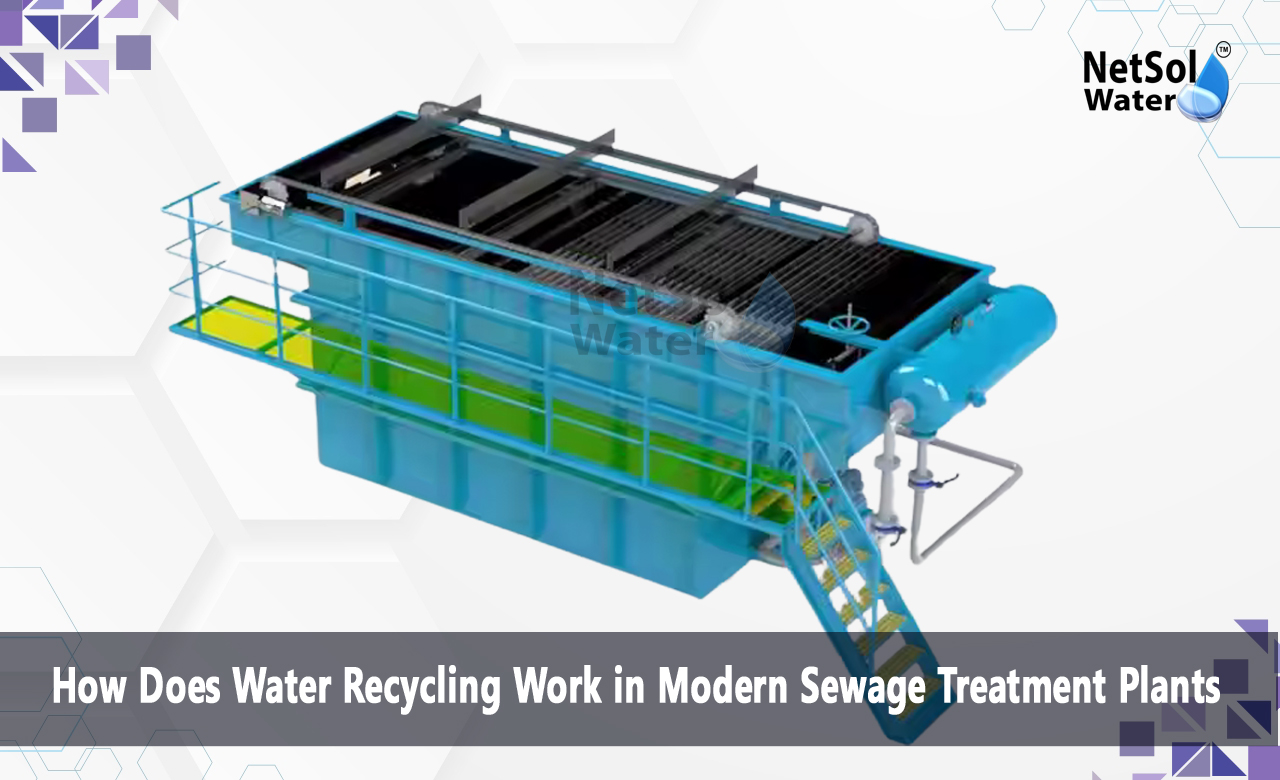How Does Water Recycling Work in Modern STP Plants?
Water recycling helps protect our water sources and saves resources for the future. It turns waste water into water that we can use once again. Many communities and industries use water recycling to cut down on water waste and reduce the strain on our natural water bodies. Modern sewage treatment plants use several methods to clean and recycle water. This process keeps our water clean and safe for many purposes. It also helps lower the cost of water and reduces the energy used to treat it. Netsol Water is a leading name in this field as a sewage treatment plant manufacturer. The systems work well and show how good engineering can help our environment. Water recycling works by passing waste water through several cleaning stages. Each stage removes different types of waste. The process is built on clear steps that ensure water is treated correctly.
The Water Recycling Process
Water recycling is the process of cleaning water so that it can be used once again. The process starts with a careful plan that makes sure each step is clear and effective. Let us have a look at some aspects of the overall system.
The Importance of Understanding the Process
We must know how water recycling works to see its role in a safe water supply. The process takes waste water from homes and industries and sends it to a treatment plant. The water goes through a series of cleaning stages that remove impurities. Each stage makes the water cleaner than the one before. This clear process shows how we can use water again in many ways. The flow of water is planned and controlled. There is a smooth transition from one stage to the next. This clarity helps both operators and communities trust the system. Let Us Have a Look at Some Key Steps
· The first step is to screen large particles.
· The second step uses sedimentation tanks to let heavy particles settle.
· The water then moves on to the next phase where biological agents help break down the organic matter.
This structured process ensures that every part of the water is treated well before it is returned to the environment.
Primary Treatment Stage
The primary treatment stage is the first step in cleaning waste water. It removes solids that are too big to pass through the system. Let us have a look at some important details of this stage.
The Role of Primary Treatment
In the primary treatment stage, large waste materials are removed from the water. This step helps protect the equipment that follows in the process. The water is held in a large tank where heavy particles settle to the bottom. The top layer of water is then allowed to flow forward. This method stops extra work in later stages. The use of simple gravity and controlled flow makes the process clear and effective.Let Us Have a Look at Some Techniques
Large screens and settling tanks are the main tools in this stage.
· The screens catch sticks and plastics.
· The settling tanks let sand and grit sink down.
These basic techniques help ensure that the water moves to the next stage without extra solid waste. The simplicity of this process makes it easy to manage and keeps it running well.
Secondary and Tertiary Treatment Processes
Secondary and tertiary treatments make the water much cleaner. They use biological and chemical processes to remove even small traces of waste. Let us have a look at some details of these advanced stages.
The Role of Secondary Treatment
Secondary treatment uses living organisms to digest the remaining organic matter. This step is important to lower the levels of waste in the water. The process happens in tanks where water and microbes work together. The microbes consume the organic waste and turn it into simpler compounds. The water gets clearer as the microbes work steadily. This part of the process is central to modern water recycling systems.
Tertiary treatment uses methods that further clean the water. The process may use filters or chemical agents that help remove any remaining impurities. The water is treated until it is safe for many uses. This final stage makes sure that the water can be used for irrigation or even for industrial purposes. The attention to detail in these steps shows how modern systems keep the water safe and useful.
Conclusion
Water recycling is a process that cleans water for reuse in many ways. It uses clear steps and simple techniques to move water through several treatment stages. Every step in the process helps to make the water safe and useful. The work done by a sewage treatment plant manufacturer such as Netsol Water shows that simple and clear methods can work very well. Their systems work to keep water clean and help communities use water wisely. The clear process and steady flow of treatment make the water recycling system a good model for safe water management.
Contact Netsol Water at:
Phone: +91-9650608473, Email: enquiry@netsolwater.com



